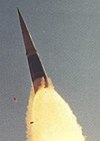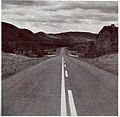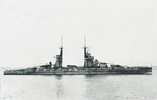Wikipedia:Today's featured article/June 2018
| << | Today's featured articles for June 2018 | >> | ||||
|---|---|---|---|---|---|---|
| Su | Mo | Tu | We | Th | Fr | Sa |
| 1 | 2 | |||||
| 3 | 4 | 5 | 6 | 7 | 8 | 9 |
| 10 | 11 | 12 | 13 | 14 | 15 | 16 |
| 17 | 18 | 19 | 20 | 21 | 22 | 23 |
| 24 | 25 | 26 | 27 | 28 | 29 | 30 |
June 1
The Pioneer Helmet is a boar-crested Anglo-Saxon helmet dating from the late seventh century. During a March 1997 excavation, it was found in Wollaston, Northamptonshire, in a young man's grave, probably the burial mound of a high-status warrior, along with a hanging bowl and a pattern welded sword. The sparsely decorated helmet is one of only six Anglo-Saxon helmets yet discovered, joined by finds from Benty Grange, Sutton Hoo, York, Shorwell and Staffordshire. Like most of these, it is one of the crested helmets that flourished in England and Scandinavia from the sixth through the eleventh centuries. Boar-crested helmets are a staple of Anglo-Saxon imagery, evidence of a Germanic tradition in which the boar invoked the protection of the gods. In the Anglo-Saxon poem Beowulf, such helmets are mentioned five times. Unveiled at the New Walk Museum in Leicester, the helmet is on display at the Royal Armouries Museum in Leeds. (Full article...)
June 2
The X-10 Graphite Reactor at Oak Ridge National Laboratory in the U.S. state of Tennessee was the world's second artificial nuclear reactor (after Chicago Pile-1), and the first designed for continuous operation. It was built during World War II as part of the Manhattan Project. The production of sufficient plutonium for atomic bombs required reactors a thousand times as powerful as Chicago Pile-1, along with facilities to chemically separate the plutonium bred in the reactors from uranium and fission products. The air-cooled X-10 pilot plant used nuclear graphite as a neutron moderator and pure natural uranium in metal form for fuel. DuPont commenced construction in Oak Ridge in 1943, and the reactor produced its first plutonium in early 1944. It supplied the Los Alamos Laboratory with its first significant amounts of plutonium, and its first reactor-bred product. The reactor and chemical separation plant provided invaluable experience for engineers, technicians, reactor operators, and safety officials, who then moved on to a larger site in Hanford, Washington. (Full article...)
June 3
Dubnium is an artificially produced chemical element with symbol Db and atomic number 105. It is highly radioactive: the most stable known isotope, dubnium-268, has a half-life of just over a day. Credit for discovery of the element was contested between the Soviet Joint Institute for Nuclear Research and American Lawrence Berkeley Laboratory beginning in 1970; the dispute was resolved in 1993 by an official investigation of the IUPAC/IUPAP Joint Working Party, which awarded joint credit. The element was officially named in 1997 after the town of Dubna, the site of the Soviet institute. Dubnium should share most of its chemical properties, such as its valence electron configuration and a dominant +5 oxidation state, with other group 5 elements, such as vanadium, niobium, and tantalum, with a few anomalies due to relativistic effects. Solution chemistry experiments have revealed that dubnium often behaves more like niobium than tantalum, breaking periodic trends. (Full article...)
June 4
The King Island emu lived on King Island, in the Bass Strait between mainland Australia and Tasmania. This extinct subspecies, the smallest of all emus, may have exhibited insular dwarfism. It had darker plumage, black and brown, with naked blue skin on the neck, and its chicks were striped like those on the mainland. The behaviour of the King Island emu probably did not differ much from that of the mainland emu. They fed on berries, grass and seaweed. They ran swiftly, and could defend themselves by kicking. Europeans discovered the subspecies in 1802. The French naturalist François Péron wrote about the bird after conducting an interview with a seal hunter, and in 1807 the artist Charles Alexandre Lesueur sketched a head, wing and feathers possibly belonging to this subspecies. In 1804 two live King Island emus were sent to France, where they were kept in the Jardin des plantes until they died in 1822, probably the last of their kind. (Full article...)
June 5
Harry R. Truman (1896–1980) was a resident of the U.S. state of Washington who lived on the Mount St. Helens volcano. The owner and caretaker of Mount St. Helens Lodge at Spirit Lake, at the foot of the mountain, he came to brief fame as a folk hero in the months preceding the volcano's 1980 eruption after he stubbornly refused to leave his home despite evacuation orders. He appeared on the front page of The New York Times and The San Francisco Examiner and garnered the attention of National Geographic, United Press International, and The Today Show. Truman is presumed to have been killed by a pyroclastic flow that overtook his lodge and buried the site under 150 feet (50 m) of volcanic debris. In 1981 he was portrayed by one of his favorite actors, Art Carney, in the docudrama film St. Helens. Two books, a commemorative album, and more than 100 songs were written in Truman's honor, including songs by Headgear and Billy Jonas. (Full article...)
June 6
Fantasy Book was a semi-professional American science fiction magazine that published eight issues between 1947 and 1951. The listed editor, "Garret Ford", was a pseudonym for William L. Crawford and his wife, Margaret; the publisher was Crawford's Fantasy Publishing Company, Inc. Crawford had problems distributing the magazine, and his budget limited the quality of the paper he could afford and the artwork he was able to buy, but he attracted submissions from some well-known writers, including Isaac Asimov, Frederik Pohl, A. E. van Vogt, Robert Bloch, and L. Ron Hubbard. Cordwainer Smith's first sale, "Scanners Live in Vain", appeared in the magazine, and was later included in the first Science Fiction Hall of Fame anthology; it is now regarded as one of Smith's finest works. Jack Gaughan, later an award-winning science fiction artist, made his first professional sale to Fantasy Book, for the cover illustrating Smith's story (pictured). (Full article...)
June 7
The meteorological history of Hurricane Gordon spanned thirteen days and included six landfalls. The hurricane formed near Panama in the southwestern Caribbean on November 9, 1994. As a tropical depression it brushed Nicaragua and spent several days in the waters off the country's coast. Heading north and then northwest, Gordon made two more landfalls, on eastern Jamaica and eastern Cuba, while delivering tremendous rains to western Hispaniola. After it made its fourth landfall crossing the Florida Keys, it spent a few days as an unusual hybrid of a tropical and a subtropical system in the Gulf of Mexico. It reclaimed its fully tropical form and made another landfall, across the Florida peninsula, and continued into the Atlantic Ocean, where it strengthened to a Category 1 hurricane. It briefly wandered close to North Carolina, but then headed south, weakening into a minor tropical storm before its final landfall on Florida's east coast. (Full article...)
June 8
Emily Davison (11 October 1872 – 8 June 1913) was a suffragette who fought for votes for women in the United Kingdom in the early twentieth century. She grew up in a middle-class family, and studied at Royal Holloway College, London, and St Hugh's College, Oxford, before taking jobs as a teacher and governess. A staunch feminist and passionate Christian, she deemed socialism a moral and political force for good. She became an officer of the Women's Social and Political Union and a chief steward during its marches. Her tactics included breaking windows, throwing stones, setting fire to postboxes and, on three occasions, hiding overnight in the Palace of Westminster—including on the night of the 1911 census. She was arrested nine times, went on hunger strike seven times and was force fed on forty-nine occasions. She died after being hit by King George V's horse Anmer at the 1913 Epsom Derby when she walked onto the track during the race. (Full article...)
June 9
Norodom Ranariddh (born 1944) is a Cambodian prince, politician and law academic. He is the second son of Norodom Sihanouk of Cambodia and a half-brother of the current king, Norodom Sihamoni. A graduate of the University of Provence, he started his career as a law researcher and lecturer in France. In 1983, he joined FUNCINPEC, a Cambodian royalist party, and in 1986 became the chief-of-staff and commander-in-chief of the Armée nationale sihanoukiste. He became the secretary-general of FUNCINPEC in 1989, and its president in 1992. He was the first Prime Minister of Cambodia, serving between 1993 and 1997. After being forced into exile in July 1997, he returned to Cambodia in March 1998 and led his party in the Cambodian general election, becoming President of the National Assembly between 1998 and 2006. He resigned in March 2006, and in October 2006 was ousted as president of FUNCINPEC. In March 2014 he launched the Community of Royalist People's Party, but dissolved it in January 2015 and was re-elected to the FUNCINPEC presidency. (Full article...)
June 10
Neville Chamberlain (1869–1940) was a British statesman of the Conservative Party who served as Prime Minister from May 1937 to May 1940. He became a Member of Parliament in the 1918 general election. He was rapidly promoted in 1923 and, after a short-lived Labour-led government, returned as Minister of Health from 1924 to 1929, introducing a range of reform measures. He was appointed Chancellor of the Exchequer in the National Government in 1931. As Prime Minister, he adopted a foreign policy of appeasement towards Nazi Germany, conceding the German-speaking Sudetenland region of Czechoslovakia in the Munich Agreement of September 1938. This policy was widely popular among the British at the time. On 3 September 1939, as Germany was invading Poland, the UK declared war on Germany. Chamberlain led Britain through the first eight months of World War II, but resigned the premiership on 10 May 1940 as the Allies were being forced to retreat from Norway. (Full article...)
June 11
The Hogwarts Express is an 1,800 mm (5 ft 10+7⁄8 in) broad-gauge railway, people mover, and attraction within the Universal Orlando Resort in Orlando, Florida, in the United States. The route runs 676 meters (2,218 ft) between Hogsmeade station in the Islands of Adventure theme park and King's Cross station in the London area of the Universal Studios Florida theme park. The railway provides a connection between Diagon Alley and Hogsmeade within the resort's Wizarding World of Harry Potter section, based on the Harry Potter film series. The system, which was manufactured by the Doppelmayr Garaventa Group, is operated with two replicas of the Hogwarts Express. The two directions of travel show different videos. The railway opened to the public in July 2014, along with the rest of the Diagon Alley expansion. The service was immediately popular, providing one million rides within one month of opening. (Full article...)
June 12
Cloud is a 2005 puzzle video game developed by a team of students in the University of Southern California's Interactive Media Program. The indie team began development of Cloud in January 2005 with a US$20,000 grant from the school; the game was released as a free download that October. By July 2006, the hosting website had received 6 million visits, and the game had been downloaded 600,000 times. Players fly through a dream world and manipulate clouds to solve puzzles. The concept was partially based on the childhood daydreams of lead designer Jenova Chen (pictured), who had often been hospitalized for asthma. Cloud won a Student Showcase award at the 2006 Independent Games Festival. The game was well received by critics, who cited its visuals, music, and relaxing atmosphere as high points. Chen and producer Kellee Santiago went on to co-found the studio Thatgamecompany, which has considered remaking Cloud as a commercial video game. (Full article...)
Part of the Thatgamecompany featured topic.
June 13
Nike-X was an anti-ballistic missile system developed in the 1960s by the US Army to counter the Soviet Union's intercontinental ballistic missiles (ICBM). Tested but never deployed, it was a response to the problems with Nike Zeus, whose radars could not tell the difference between warheads and decoys until it was too late to launch. Nike-X would wait until the last moment and launch a very fast missile known as Sprint (pictured); the entire engagement would last only a few seconds, at altitudes as low as 25,000 feet (7.6 km). While technically capable, a Nike-X missile would have been very expensive, as much as 20 times the cost of the ICBM at which it was fired. Robert McNamara, the Secretary of Defense, felt the Soviets would respond by building more ICBMs, leading to a new nuclear arms race. In 1967, Nike-X was cancelled in favor of a simpler system, Sentinel. (Full article...)
June 14
Norma is a small constellation in the Southern Celestial Hemisphere between Ara and Lupus, one of twelve drawn up in the 18th century by French astronomer Nicolas Louis de Lacaille and one of several depicting scientific instruments. Its name refers to a right angle in Latin, and is variously considered to represent a rule, a carpenter's square, a set square or a level. It remains one of the 88 modern constellations. Four of Norma's brighter stars make up a square in the field of faint stars. Gamma2 Normae is the brightest star with an apparent magnitude of 4.0. Mu Normae is one of the most luminous stars known, but is partially obscured by distance and cosmic dust. Four star systems are known to harbour planets. The Milky Way passes through Norma, and the constellation contains eight open clusters visible to observers with binoculars. The constellation also hosts Abell 3627, the Norma Cluster, one of the most massive galaxy clusters known. (Full article...)
June 15
Happy Chandler (1898–1991) was the 44th Governor of Kentucky (1935–1939), a member of the U.S. Senate, the Commissioner of Baseball, and the 49th Governor of Kentucky (1955–1959). In his first term as governor, he oversaw the repeal of the sales tax, replacing the lost revenue with new excise taxes and the state's first income tax, and helped improve the state's education and transportation systems. He resigned as governor so his successor could appoint him to the Senate. A fiscal conservative and disciple of Virginia's Harry F. Byrd, Chandler opposed parts of Roosevelt's New Deal and openly disagreed with the president's decision to prioritize European operations in World War II over the Pacific War. In 1945, he resigned his Senate seat to become the Commissioner of Baseball, succeeding Kenesaw Mountain Landis. He approved Jackie Robinson's contract with the Brooklyn Dodgers, initiating the racial integration of Major League Baseball. (Full article...)
June 16
The Ford Piquette Avenue Plant in Detroit, Michigan, is a former factory where the Ford Motor Company first produced the Model T, the car credited with initiating the mass use of automobiles in the United States. Built in 1904, it was the company's second production center, after the Mack Avenue Plant. Early experiments using a moving assembly line to make cars were also conducted at the Piquette Avenue Plant, and it was the first factory where more than 100 cars were assembled in one day. Ford used the factory until its production lines were transferred in 1910 to the Highland Park Plant. Studebaker bought the factory in 1911, using it to assemble cars until 1933. The building was sold in 1936, and passed through a series of owners before becoming a museum in 2001; its exhibits primarily focus on the beginning of the American automotive industry. The Piquette Avenue Plant was designated a National Historic Landmark in 2006. (Full article...)
June 17
"all things" is the seventeenth episode of the seventh season of the American science fiction television series The X-Files. Written and directed by lead actress Gillian Anderson (pictured), it is unconnected to the wider mythology of The X-Files and functions as a monster-of-the-week story. The series centers on special agents Fox Mulder (David Duchovny) and Dana Scully (Anderson) of the Federal Bureau of Investigation, who work on cases linked to the paranormal called X-Files. In this episode, a series of coincidences lead Scully to Dr. Daniel Waterston (Nicolas Surovy), a married man with whom she had an affair while at medical school. After Waterston slips into a coma, Scully puts aside her skepticism and seeks out alternative treatment to save him. Viewer response was generally positive, but the episode received mixed reviews, and many critics faulted the characterization of Scully. The cast and crew helped Anderson adjust to her directorial debut—the first time a woman directed an episode of The X-Files. (Full article...)
June 18
A Waterloo Medal was designed by sculptor Benedetto Pistrucci. Commemorating the Battle of Waterloo (18 June 1815), the medal was commissioned by the British Government in 1819 on the instructions of George IV while Prince Regent; copies were to be presented to the victorious generals and to leaders of Britain's allies. The Prince Regent and William Wellesley-Pole, Master of the Mint, had been impressed by Pistrucci's models, and gave him the commission. Pistrucci fell from grace at the Royal Mint in 1823 by insisting on his own designs and refusing to copy another designer's work, and he likely concluded he would be sacked when the medal was finished. He delayed completion until 1849, when he submitted the matrices to the Mint. As most of the intended recipients had died by then, and relations with France had improved, the medals were never struck, though modern-day editions have been made for sale to collectors. Pistrucci's designs have been greatly praised by numismatic writers. (Full article...)
June 19
Wally Hammond (19 June 1903 – 1 July 1965) was an English first-class cricketer, primarily a middle-order batsman, who played for Gloucestershire in a career that lasted from 1920 to 1951. Beginning as a professional, he later became an amateur and was appointed captain of England. Wisden Cricketers' Almanack described him in his obituary as one of the four best batsmen in the history of cricket. In a Test career spanning 85 matches, he scored 7,249 runs and took 83 wickets. Hammond captained England in 20 of those Tests, winning 4, losing 3, and drawing 13. His career aggregate of runs was the highest in Test cricket until surpassed by Colin Cowdrey in 1970; his total of 22 Test centuries remained an English record until Alastair Cook surpassed it in December 2012. Overall, he scored 50,551 runs and 167 centuries in first-class cricket games, respectively the seventh and third highest totals by a first-class cricketer. (Full article...)
June 20
King's Highway 61 is a provincially maintained highway in the Canadian province of Ontario that forms part of the Lake Superior Circle Tour. The 61-kilometre (38 mi) route extends from a junction at Highway 11, Highway 17 and the Harbour Expressway in Thunder Bay south to a bridge over the Pigeon River, where it crosses into the United States and becomes Minnesota State Highway 61. The roads on either side of the river were completed in 1916, but there was no bridge to connect them. Funding for a bridge over the international crossing at the Pigeon River required federal approval from both governments, but local civic groups in Port Arthur and Duluth expected that the process would be too slow, and built it without approval. The bridge was opened by a travelling motorcade in August 1917, permitting travel between Ontario and Minnesota. To the surprise of the civic groups, Canadian officials attending the opening announced federal funding to cover the bridge costs. (Full article...)
June 21
Two Andrea Doria-class dreadnought battleships were built for the Royal Italian Navy. Completed during World War I, Andrea Doria (pictured) and Caio Duilio displayed incremental improvements over the preceding Conte di Cavour class. Like the earlier ships, they were armed with a main battery of thirteen 305-millimeter (12.0 in) guns. The two ships were based in southern Italy during World War I to help contain the Austro-Hungarian Navy surface fleet in the Adriatic, but neither vessel saw combat during the conflict. After the war, they cruised the Mediterranean and were involved in several international incidents, including at Corfu in 1923. In 1940, when Italy was engaged in World War II, they were moored when the British launched a carrier strike on the Italian fleet. In the resulting Battle of Taranto, Caio Duilio was hit by a torpedo and forced to beach to avoid sinking. (Full article...)
June 22
Dilophosaurus was one of the earliest large predatory dinosaurs, living in what is now North America during the Early Jurassic, about 193 million years ago. The genus name means "two-crested lizard". It was smaller than some later theropods, about 7 meters (23 ft) in length, with a weight of about 400 kilograms (880 lb). It had a pair of plate-shaped crests on its skull, and the upper jaw had a gap below the nostril. The teeth were long, curved, and thin. The arms were powerful, and the hands had four fingers. Dilophosaurus was active and bipedal, and may have hunted large animals, though it could also have fed on smaller animals and fish. The function of the crests is unknown; they were too weak for battle, but may have been used in visual display. Dilophosaurus was featured in the movie Jurassic Park, in which it was given the fictional abilities to spit venom and expand a cowl on its neck. It has been designated as the state dinosaur of Connecticut. (Full article...)
June 23
The equestrian statue of Edward Horner stands inside St Andrew's Church in the village of Mells in Somerset, south-western England. The sculpture was designed by the architect Sir Edwin Lutyens and executed by the equestrian painter and war artist Alfred Munnings. It is a memorial to Edward Horner, who died of wounds in the First World War. Edward Horner was the only surviving son and heir of Sir John and Lady Frances Horner of Mells Manor and a member of an extended upper-class social group known as the Coterie, many of whom were killed in the war. Lutyens was a friend of the Horner family, having designed buildings and structures for them since the beginning of the 20th century. For Horner's memorial, Lutyens designed the plinth himself, and engaged Munnings for the latter's first public work of sculpture. The statue is a bronze of a cavalry officer on horseback, bare-headed, with his helmet and sword on the horse's saddle. (Full article...)
June 24
The small-toothed sportive lemur is a primate species in the family Lepilemuridae that—like all lemurs—is endemic to Madagascar. The species lives in dense rainforest in southeastern Madagascar, and can be found in two national parks, Ranomafana and Andringitra. Described in 1894, it is difficult to visually distinguish from the weasel sportive lemur. Phylogenetic studies support its species status and suggest that it is the only eastern Malagasy sportive lemur that is more closely related to western than to other eastern species. It weighs between 0.9 and 1.2 kg (2.0 and 2.6 lb) and measures 55 to 64 cm (22 to 25 in) from head to tail. Its fur is mostly reddish-brown or chestnut color, with a dark stripe running from its head down its back. Its underside and neck are lighter in color. Like other sportive lemurs, it is nocturnal, sleeping in concealed tangles of vegetation and tree holes. It is solitary and eats leaves, fruits, and flowers. (Full article...)
June 25
The Russulaceae are a diverse family of fungi in the order Russulales, with roughly 1,900 known species and a worldwide distribution. They include the genus Russula and the milk-cap mushrooms, some of which are edible. Russulaceae have gilled mushrooms characterised by brittle flesh. In addition to these typical agaricoid forms, the family contains species with fruitbodies that are laterally stiped (pleurotoid), closed (secotioid or gasteroid), or crust-like (corticioid). Molecular phylogenetics has demonstrated close affinities between species with very different fruitbody types and has discovered new, distinct lineages. An important group of root-symbiotic Russulaceae fungi in forests and shrublands around the world includes Lactifluus, Multifurca, Russula, and Lactarius. The crust-forming genera Boidinia, Gloeopeniophorella, and Pseudoxenasma, all wood-decay fungi, have basal positions in the family. (Full article...)
June 26
C. R. M. F. Cruttwell (1887–1941) was a British historian and academic who served as principal of Hertford College, Oxford (pictured). The author of A History of the Great War, 1914–18, he specialised in modern European history. In 1912 he became a lecturer in history at Hertford. His academic career was interrupted by war service during which he suffered severe wounds. He became dean of Hertford in 1919, and its principal in 1930. He served as a Justice of the Peace in Hampshire, where he had a country home, and stood unsuccessfully for the university's parliamentary seat in the 1935 general election, representing the Conservative Party. The novelist Evelyn Waugh showed his distaste for Cruttwell, his former tutor, by repeatedly using the name in his early novels and stories to depict a sequence of unsavoury or ridiculous characters. This vendetta may have contributed to Cruttwell's eventual mental breakdown. (Full article...)
June 27
Monroe Edwards (1808–1847) was an American slave trader who was convicted of forgery after a well-publicized trial in 1842. Originally from Kentucky, Edwards moved to New Orleans, then settled in Texas. He smuggled slaves into Brazil in 1832 and into Texas in 1836. After a swindle, he was forced to flee the Republic of Texas to the United States. He tried to scam money out of various abolitionists in the United States and the United Kingdom, partly with forged letters of introduction. He then forged letters from cotton brokers in New Orleans, which he used to secure bank drafts for large sums. His fabrications caught up with him and he was arrested and tried. Convicted partly because his distinctive good looks made him memorable and easily recognizable, and partly from repetitive spelling errors in his forgeries, Edwards was sentenced to 10 years in prison, and died while incarcerated. He is mentioned in Herman Melville's 1853 short story "Bartleby, the Scrivener". (Full article...)
June 28
The Portage to San Cristobal of A.H. is a 1981 literary and philosophical novella by George Steiner (pictured). The story is about Jewish Nazi hunters who find a fictional Adolf Hitler (A.H.) alive in the Amazon jungle thirty years after the end of World War II. The book was controversial, particularly among reviewers and Jewish scholars, because the author allows Hitler to defend himself when he is put on trial in the jungle by his captors. There Hitler maintains that Israel owes its existence to the Holocaust and that he is the "benefactor of the Jews". A central theme of The Portage is the nature of language, and revolves around Steiner's lifelong work on the subject and his fascination in the power and terror of human speech. Other themes include the philosophical and moral analysis of history, justice, guilt and revenge. Despite the controversy, it was a 1983 finalist in the PEN/Faulkner Award for Fiction. It was adapted for the theatre by British playwright Christopher Hampton. (Full article...)
June 29
Ice drilling allows scientists studying glaciers and ice sheets to gain access beneath the ice, to take measurements along its interior, and to retrieve samples. Instruments in the bored holes can record temperature, pressure, speed, and direction of ice movement. Many different methods have been used since 1840, when the first scientific ice drilling expedition attempted to bore through the Unteraargletscher in the Alps. Two early methods were percussion, in which the ice is fractured and pulverized, and rotary drilling, a method often used in mineral exploration for rock drilling. In the 1940s, thermal drills that melt ice were developed, and jets of hot water or steam to bore through ice soon followed. A growing interest in ice cores, used for paleoclimatological research, led to the development of ice coring drills in the 1950s and 1960s, and there are now many different coring drills in use. (Full article...)
June 30
The More Hall Annex was a nuclear research building on the campus of the University of Washington in Seattle, Washington. Built in 1961, it housed a small research reactor until June 30, 1988, operating at a peak of 100 kilowatts thermal (kWt), and was decommissioned in 2007. The building was designed in the Brutalist architectural style by UW faculty members, using reinforced concrete walls. Large windows overlooking the reactor room allowed observation from the outside, in an attempt to demonstrate the safety of nuclear energy. The building was added to the National Register of Historic Places in 2009, after a campaign led by an architecture student in response to a demolition proposal from the university. Despite a lawsuit from preservation groups and the City of Seattle, the university began demolition of the building in July 2016. It will be replaced by a new computer science building that is expected to open in 2019. (Full article...)



























